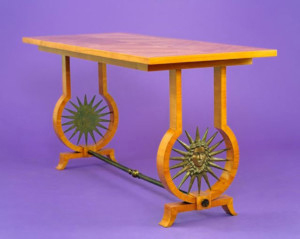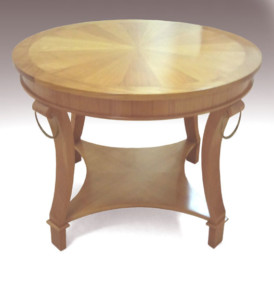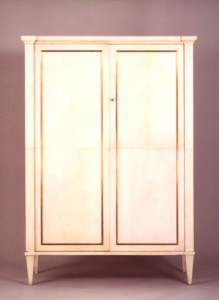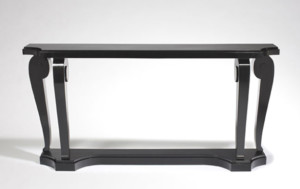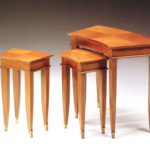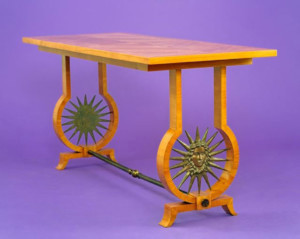
While Arbus was not himself a cabinet maker, he was interested in form and in good design. He believed in designing furniture that was comfortable and a perfect fit for the human form. His work changed the direction of his father’s firm, as Arbus designed furniture that was in opposition to the firm’s preferred style – very traditional and derivative of 18th century France. Andrè’s furniture, instead, was inspired by the Classicism of the French Empire. He also favored luxurious materials, such as finely grained veneers, lacquer, parchment, and vellum.
Arbus showed his work for the first time at the 1926 Paris Salons, and shortly after was asked by the Parisian gallery L’Epoque to exhibit his work with them. In 1932, Arbus left Toulouse for Paris. The opening of his own gallery, in 1935, was a major milestone in the designer’s career. The gallery, located on the prestigious Avenue Matignon, drew many wealthy and influential people who became his clients. They admired his luxurious and distinctive but under-stated designs. During this time he collaborated with numerous artists. Perhaps the most important was Vadim Androussov (1895-1975), whose sculpted decoration in wood, gesso, and bronze added elegant sculpture to Arbus’s already beautiful designs. These collaborations would lead to the creation of furniture which was elevated to the status of art.
Arbus made a name for himself during the 1940’s, a decade that provided us with some of the most impressive talents in the French decorative arts, such as Leleu, Adnet, Poillerat, and Dupre-Lafon, to name just a few. Félix Marcilhac, a well-known expert in Paris in the field of early 20th century decorative arts, referred to Arbus as “one of the most inventive interior designers of the period.” This period is defined by a renewed interest in the Neo- classicalstyle seen through the eyes of modern masters of whom Arbus was the leader.
Throughout his illustrious career, Arbus won numerous awards. One of his first awards was the Premier Prix Blumenthal in 1934. This was a very prestigious prize, named after Florence Meyer Blumenthal (through the Franco-American Florence Blumenthal Foundation), which awarded young French artists with a monetary stipend. Other artists who received this award were Edouard Vuillard, Aristide Maillol, Paul Signac and Auguste Perret. This was an important honor for a young artist in the beginning of his career.

André Arbus participated in the 1939 World’s Fair in the US, designing the French sections at the Expo in New York and in San Francisco. A recipient of numerous industry awards, he was also chosen as the head of the École Nationale Supérieure des Arts Décoratifs in 1951. Many of his pieces were chosen by the French government to be in the Mobilier National. The designer remained active until his death in 1969.


